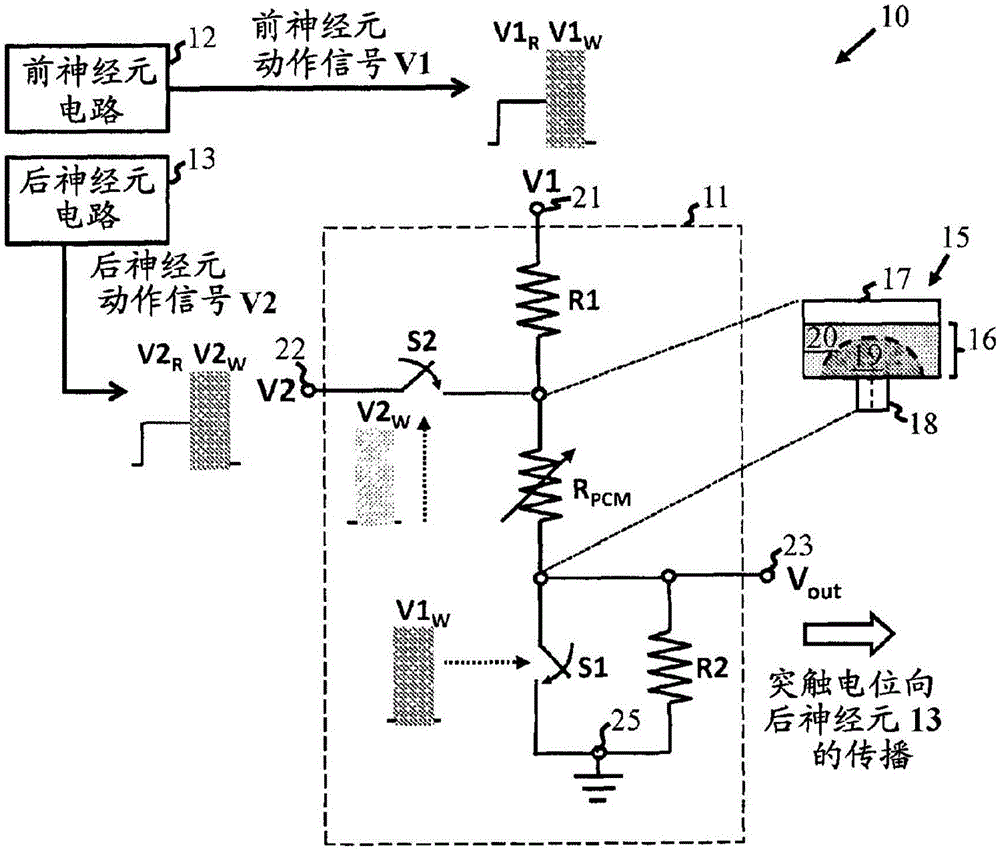Neuromorphic synapses
A neuromorphic and synaptic technology, applied in neural architecture, neural learning methods, biological neural network models, etc., can solve problems such as inefficiency and slowness
- Summary
- Abstract
- Description
- Claims
- Application Information
AI Technical Summary
Problems solved by technology
Method used
Image
Examples
Embodiment Construction
[0039] figure 2 A schematic circuit diagram of a neuromorphic system 10 embodying the invention is shown. System 10 includes synapses, generally indicated at 11 , connected between pre-neuronal circuits 12 and post-neuronal circuits 13 . The synapse 11 comprises a resistive memory cell, here a PCM cell 15, represented in the circuit as a variable resistor R PCM . As indicated schematically by enlargement in the figure, the PCM cell 15 includes a volume of chalcogenide compound 16 disposed between a first (“upper”) electrode 17 and a second (“lower”) electrode 18 . In this particular "mushroom cell" structure, the lower electrode 18 has a smaller contact area with the chalcogenide 16 than the upper electrode 17 . The variable resistance characteristic of the PCM cell 15 results from changing the relative proportions of the high resistance amorphous phase 19 and the low resistance crystalline phase 20 of the chalcogenide material 16 . In the embodiment to be described, it i...
PUM
 Login to View More
Login to View More Abstract
Description
Claims
Application Information
 Login to View More
Login to View More - R&D
- Intellectual Property
- Life Sciences
- Materials
- Tech Scout
- Unparalleled Data Quality
- Higher Quality Content
- 60% Fewer Hallucinations
Browse by: Latest US Patents, China's latest patents, Technical Efficacy Thesaurus, Application Domain, Technology Topic, Popular Technical Reports.
© 2025 PatSnap. All rights reserved.Legal|Privacy policy|Modern Slavery Act Transparency Statement|Sitemap|About US| Contact US: help@patsnap.com



